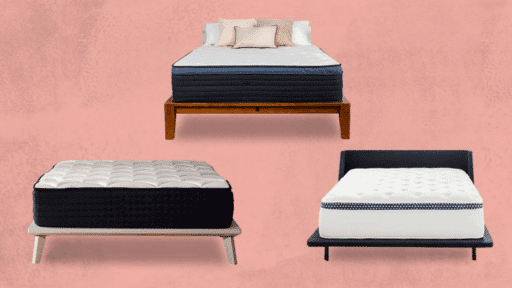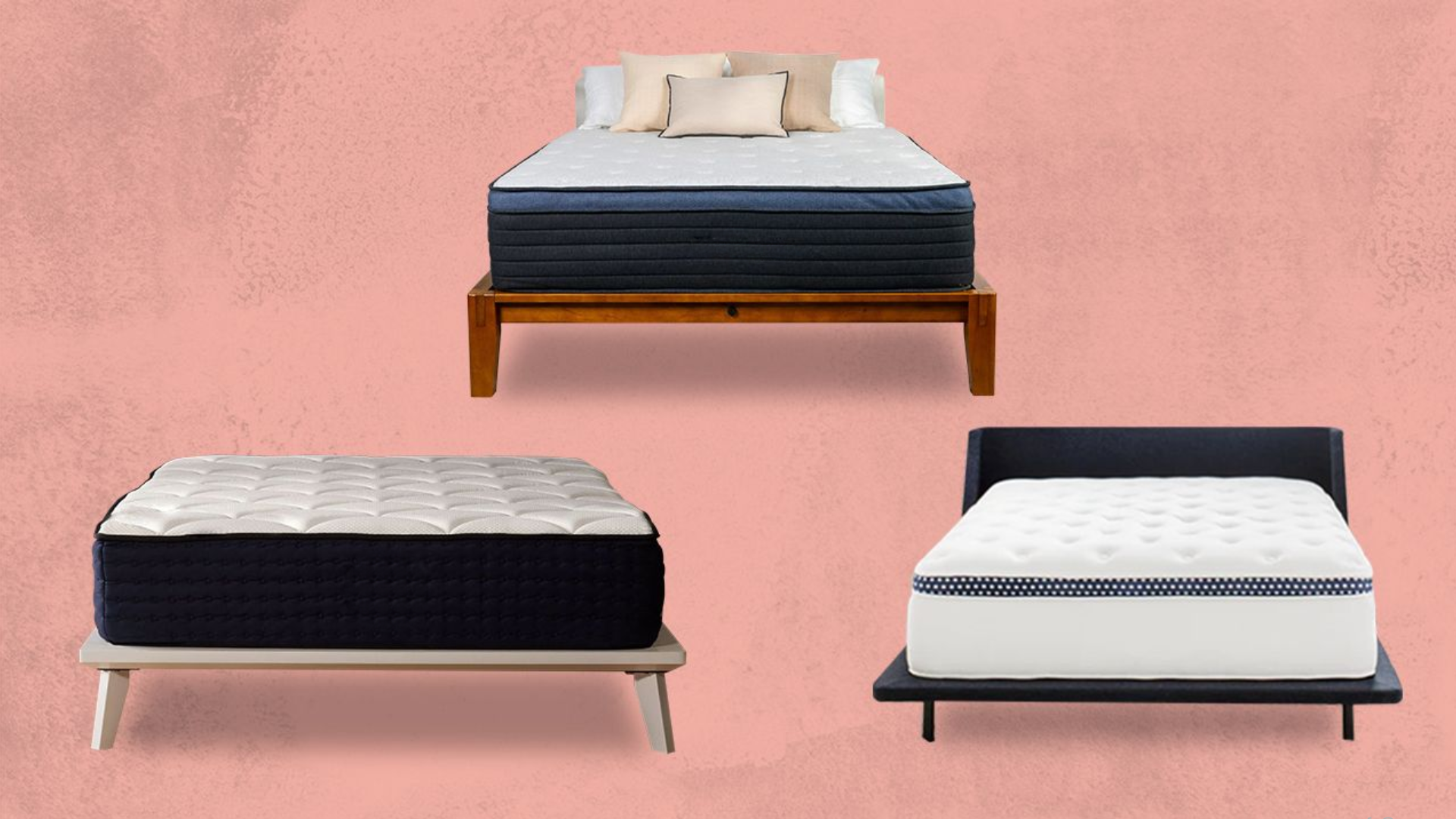Tossing and turning all night because your joints are screaming? I get it. Arthritis pain doesn’t clock out when bedtime rolls around, and a bad mattress makes everything worse.
However, here’s the thing: the right mattress can actually help alleviate that pain and provide you with the restful sleep you deserve.
I’m going to walk you through everything you need to know about finding the best mattress for arthritis.
We’ll cover the key features that matter most to find different mattress types, and I’ll share some practical tips to help you make the right choice for your specific needs.
What Makes a Mattress “Arthritis-Friendly”?
When I began researching mattresses for arthritis relief, I realized there’s more to it than simply being “soft” or “firm.” The best mattress for arthritis needs to tick several specific boxes.
Pressure Relief is huge. Your joints are already angry; you don’t need extra pressure points digging into your hips, shoulders, and knees all night. A good arthritis mattress cradles these sensitive spots while keeping your spine aligned.
Proper Support matters as much. Too soft, and you’ll sink like a rock. Too firm, and you’ll feel like you’re sleeping on concrete. You want that sweet spot where your body feels supported but not stiff.
Temperature Regulation is a game-changer. Many people with arthritis find that heat helps their joints, but nobody wants to wake up in a sweat puddle. Look for materials that breathe well and keep you comfortable.
How Arthritis Disrupts Sleep
Let me paint a picture you probably know all too well. It’s 2 AM, and you’re wide awake because your hip feels like it’s on fire. You shift positions, but now your shoulder’s complaining. Sound familiar?
Arthritis doesn’t just hurt during the day; it can also significantly disrupt your sleep.
Where Arthritis Hits Hardest at Night
Your hips bear the brunt when you’re lying on your side. That constant pressure can turn a dull ache into sharp, shooting pain that jolts you awake.
Shoulders are another troublemaker, especially if you’re a side sleeper. The weight of your body pressing down creates pressure points that inflamed joints can’t handle.
Your lower back may feel okay during the day, but lying flat can sometimes exacerbate stiffness and pain.
The Sleep Disruption Domino Effect
Most people with arthritis face a predictable pattern. First, you struggle to fall asleep because you can’t find a comfortable position.
Then you wake up multiple times throughout the night, tossing and turning in an attempt to find relief. Morning arrives, and you’re stiff as a board – sometimes worse than when you went to bed.
Sleep deprivation actually increases inflammation in your body. Less sleep means more pain, which means even less sleep the next night.
Best Mattress For Arthritis Pain Relief
When managing arthritis, the type of mattress you sleep on can make a world of difference.
Let’s break down the most popular mattress types and evaluate their performance in terms of joint support, pressure relief, and sleep quality.
1. Memory Foam Mattresses

Memory foam mattresses mold to your body, offering targeted support that relieves pressure on sore joints.
This cradling effect can help reduce nighttime pain, particularly in the shoulders, hips, and knees. However, some models tend to trap heat, which may be uncomfortable for hot sleepers.
Best for: Pressure relief and full-body contouring
Pros:
- Excellent pressure relief
- Minimizes motion transfer
- Deep contouring for sensitive joints
Cons:
- Can retain heat unless gel-infused or open-cell
- May feel too soft or sink too much for some users
Check out this Memory Foam Mattress on Amazon, designed for pressure relief and better joint support.
2. Latex Mattresses
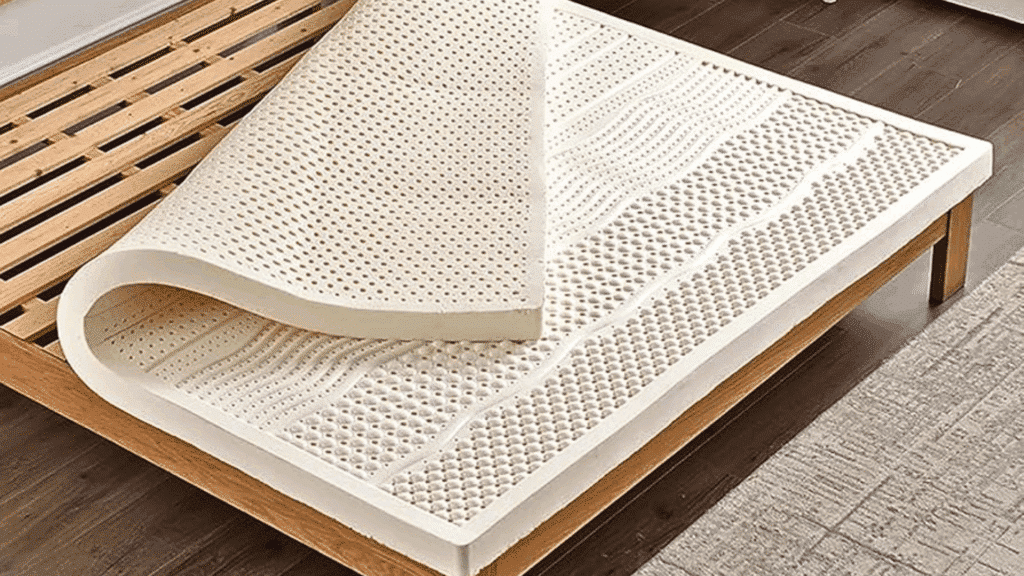
Latex mattresses offer a bouncier, more supportive surface than memory foam, making it easier to change positions without jarring sensitive joints.
They’re also naturally hypoallergenic and breathable, making them an excellent choice for individuals with arthritis who tend to sleep hot or suffer from allergies.
Best for: Responsive support and natural cooling
Pros:
- Supportive yet pressure-relieving
- Naturally cool and breathable
- Long-lasting and eco-friendly
Cons:
- Can be heavy and expensive
- Less contouring than memory foam
Check out this Latex Mattress on Amazon for better support and pain relief.
3. Hybrid Mattresses
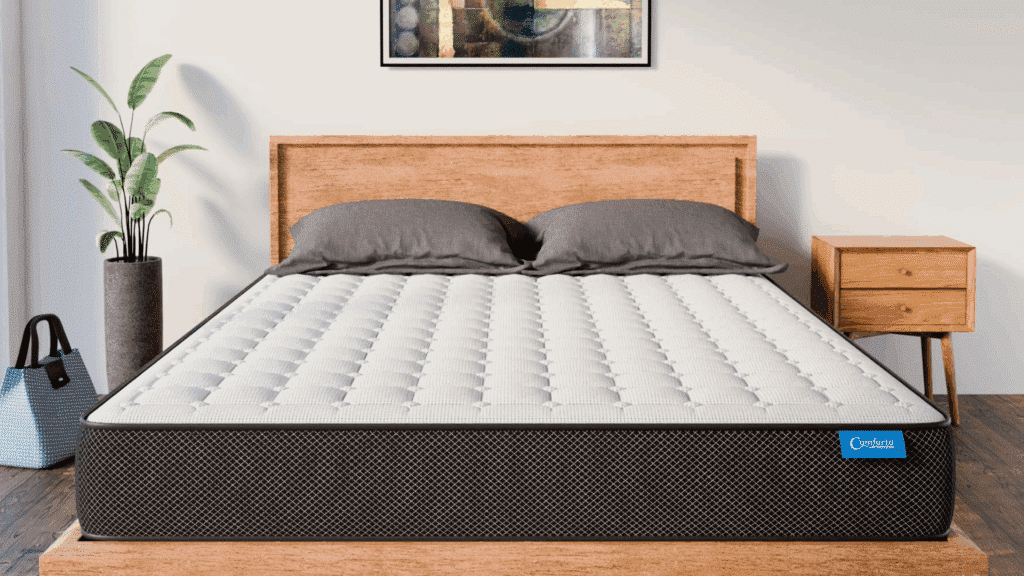
Hybrids combine innerspring coils with a comfort layer (typically foam or latex), providing the ideal balance of support and cushioning.
The coil base adds breathability and structural support, while the top layer provides pressure relief. This combination can be ideal for arthritis sufferers seeking both bounce and contour.
Best for: Balanced support and adaptive comfort
Pros:
- Excellent support and spinal alignment
- Great airflow for temperature regulation
- Pressure-relieving comfort layers
Cons:
- It can be more expensive
- Quality varies widely by brand
Check out this Hybrid Mattress on Amazon for comfort and relief
4. Innerspring Mattresses
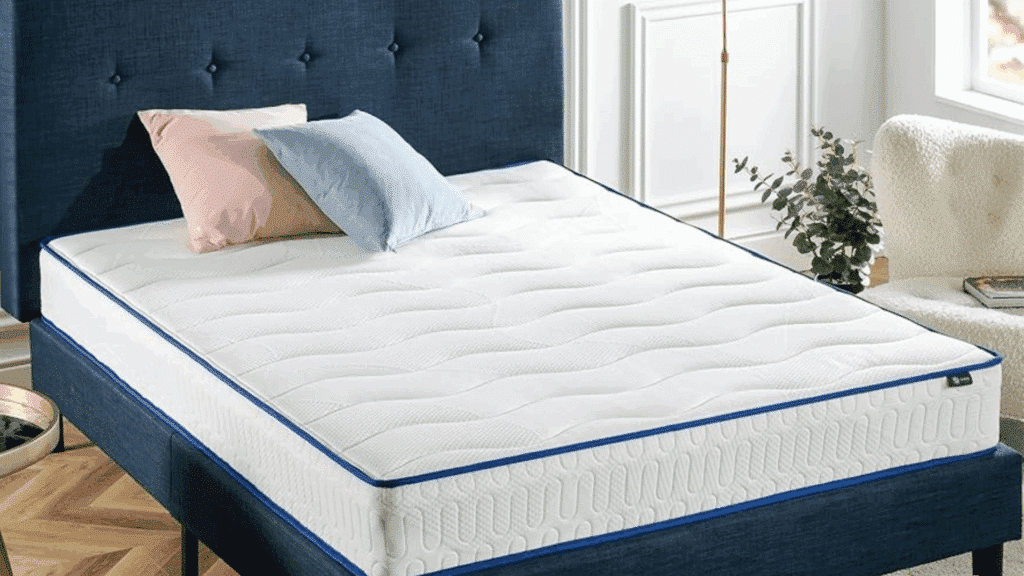
Traditional innerspring mattresses use interconnected or pocketed coils for support.
While they offer good airflow and bounce, they typically lack the cushioning needed for arthritis relief unless paired with a plush topper.
Best for: Budget-conscious shoppers who prefer firm, bouncy beds
Pros:
- Affordable and widely available
- High bounce and edge support
- Great airflow
Cons:
- Poor pressure relief
- Can cause discomfort on pressure points without added padding
Check out this Innerspring Mattress on Amazon for pressure and pain relief
How the Right Mattress Improves Daily Life
Finding the best mattress for arthritis isn’t just about better sleep; it ripples through every part of your day.
When your joints finally get the relief they need at night, you’ll notice improvements you didn’t even realize were connected to your mattress.
- Morning mobility becomes manageable again: When pressure points aren’t aggravated all night, you wake up with less stiffness and can actually move without that initial sharp pain.
- Your mood and energy levels stabilize: Better rest means you’re not running on fumes and frustration by mid-afternoon, and you can actually enjoy your days instead of just surviving them.
- Natural healing kicks into high gear: Deep sleep is when your body reduces inflammation and repairs damaged tissue. Quality rest gives your body the uninterrupted time it needs to do its maintenance work.
- Stress levels drop significantly: When you’re not dreading bedtime or waking up exhausted, the mental burden lifts. Reduced pain-related anxiety leads to improved overall well-being.
- Daily activities become possible again: My neighbor Sarah went from waking up 4-5 times nightly to sleeping through the night after switching to a new mattress. She’s back to taking morning walks that she gave up years ago.
Complementary Sleep Aids for Arthritis Relief
While the best mattress for arthritis plays a central role in managing arthritis-related sleep issues, additional sleep aids can enhance comfort and support the healing process.
Strategic use of pillows, toppers, blankets, and healthy routines can work in tandem to ease joint pressure and improve overall rest quality.
Pillows
For individuals with hip or knee arthritis, placing a knee pillow between the legs can help align the spine and reduce strain on the lower joints, especially when sleeping on one’s side.
Cervical pillows are designed to cradle the neck’s natural curve, making them beneficial for those with neck stiffness or shoulder pain.
Mattress Toppers
Mattress toppers are another excellent way to modify your sleep surface without replacing your entire mattress.
A soft memory foam or latex topper can add much-needed cushioning to a firm or aging mattress, relieving pressure on sensitive joints and promoting better spinal alignment.
Weighted Blankets
Weighted blankets can also offer therapeutic benefits beyond just physical comfort.
Their gentle, even pressure mimics a sensation known as “deep pressure stimulation,” which has been linked to reduced anxiety, slower heart rate, and improved sleep onset.
Sleep hygiene
Maintaining a consistent sleep schedule helps regulate the body’s internal clock, making it easier to fall asleep even when discomfort is present.
Gentle, low-impact evening stretches, such as seated yoga or basic range-of-motion exercises, can loosen stiff joints before bedtime.
Conclusion
The quest to find the best mattress for arthritis isn’t always straightforward, but it’s worth it.
You’ve learned what features matter most, how the proper support can break that pain-sleep cycle, and why investing in quality rest pays dividends in your daily life.
Your arthritis doesn’t have to control your nights anymore. If you opt for memory foam, latex, or hybrid construction, focus on the key elements we covered: pressure relief, proper support, and temperature control.
Take your time with the decision. Test mattresses when possible, read return policies carefully, and remember that the most expensive option isn’t always the best one for your specific needs.
FAQs
1. What Works Best for Arthritis Pain?
Applying heating pads, taking hot baths or showers, or using warm paraffin wax can temporarily relieve joint pain. Limit the use of heating pads to 20 minutes at a time. Ice packs can help lessen pain and inflammation, especially after physical activity.
2. What is the Best Sleeping Position for Arthritis?
If you are a back sleeper, occupational therapists (OTs) recommend using a thin pillow that will keep your spine aligned while you sleep. Side sleepers should choose a taller pillow under their neck so their neck aligns with their head.
3. Why Does Arthritis Hurt in Bed?
At night, cortisol (your anti-inflammatory hormone) dips, while pro-inflammatory proteins like cytokines surge. For arthritis sufferers, this means swelling and stiffness ramp up. Prolactin Spikes: This hormone, which aids sleep, also amplifies inflammation.
4. Is Walking Good for Arthritis?
Yes, walking is generally beneficial for individuals. It’s a low-impact exercise that can help improve joint flexibility, strengthen muscles around the joints, and potentially reduce pain and stiffness.

